What is an Olio Drop?
An Olio Drop (also spelled Oleo) is a scenic device to unroll a backdrop for theatrical plays or musicals. A traditional olio drop is a form of roll drop with the tube at the bottom. Some use the term “roll drop” interchangeably with “olio drop.” While technically true, an olio drop is a roll drop, the traditional olio drop uses the roll on the bottom of the drop and unfurls itself as it descends. A role drop tends to be a cylinder mounted or hung above the stage and unrolls the drop like a window shade from above.
Stages with low ceilings:
Spaces with low ceilings present a particularly challenging situation for those wishing to use backdrops. An olio drop is a perfect solution for stage areas with no fly space. The overhead structure will need to support the entire weight of the drop and its required mechanical parts. The top line of the drop itself must be tied to something rigid like a wooden batten or a metal pipe that is properly attached to the ceiling or other overhead grid-like structure.
The only moving parts attached overhead will be the pulleys needed to reroute the pathway of the operating lines. The other major moving part is the roll tube, which is attached to the bottom of the drop.
Olio Drop in Action
A great example of an Olio Drop in action is found on YouTube.
Unfortunately, the YouTube user hasn’t published any information about themselves, so I can’t give them proper credit. Here’s their channel link. https://www.youtube.com/user/C4spi3n/
Notice how well the windows unroll. They stay flat as the weight of the roll keeps them tight.
There’s a thunderclap at 5 seconds in. You may want to turn your volume down. 🙂
For another video demo showing the rigging and how the cloth and ropes wrap, scroll down to the middle of this page.
What is the history of the Oleo Drop?
Here we have examples of Olio drops from Rick Boychuk. Rich wrote a fantastic book on historic rigging, link below, and he shares this info about Olio Drops.
Originally, the term ‘oleo’ was applied to the location of a drop, not the drop or to the machinery. The oleo was located approximately 3 to 5 feet upstage of the plaster line. This location allowed performers enough room to enter. See ‘Who’s on First” by Abbot and Costello. The one with the baseball-themed drop. They both immediately enter downstage of the oleo.
The oleo allowed scene changes to happen during a small act downstage of the oleo.
Over time, however, the term was transferred to the drop and finally to the machinery, which was a bottom roll. Your use of the term today is appropriate.
These are original late 19th-century ‘oleo’ roll drops in Johnstown, OH. We thank Rick Boychuk for these photos.




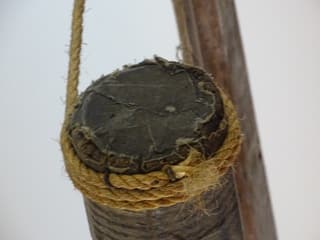
Some Olio Drop examples provided by Dan Sheehan.
The pipe is almost to the floor and has over a dozen rope wraps. When rigging these drops, you must be careful not to allow the rope to wrap over the soft goods. Notice these wraps stop at the perfect point.
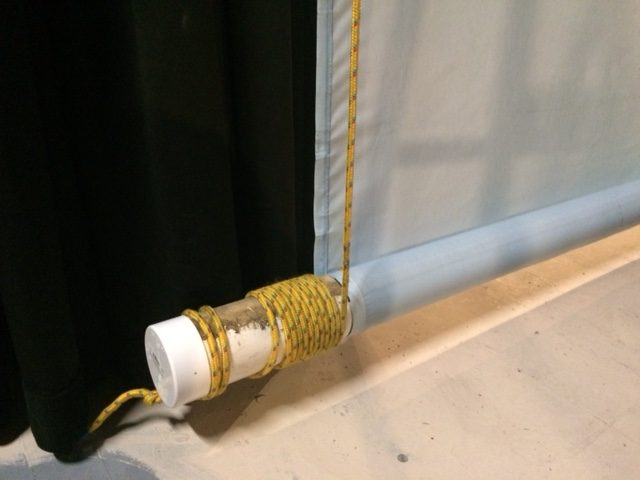
The drop is rolled up against the rigging. This one looks like it’s using a pipe.
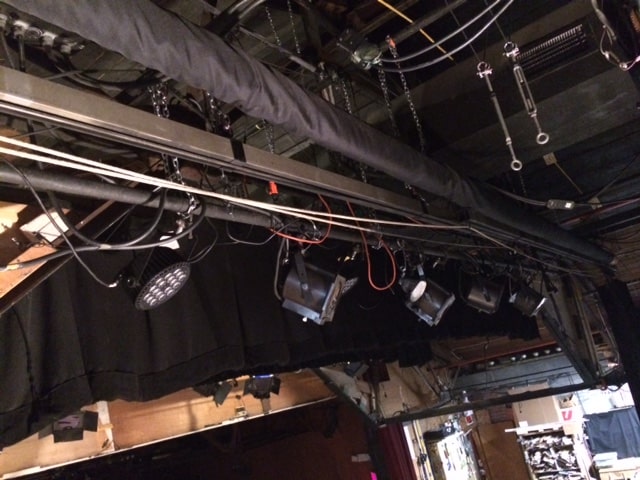
Here the drop is part way down and has around six or seven wraps around the pipe.
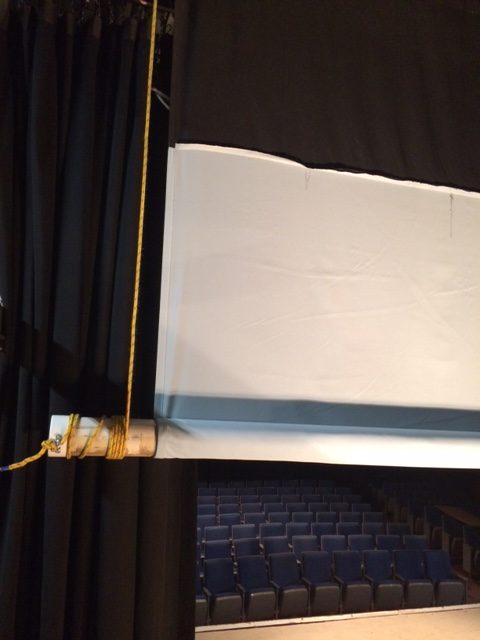
Some Olio Drop examples Courtesy Jon Lagerquist
The drop is rolled up against the rigging. This one looks like it’s using a pipe.
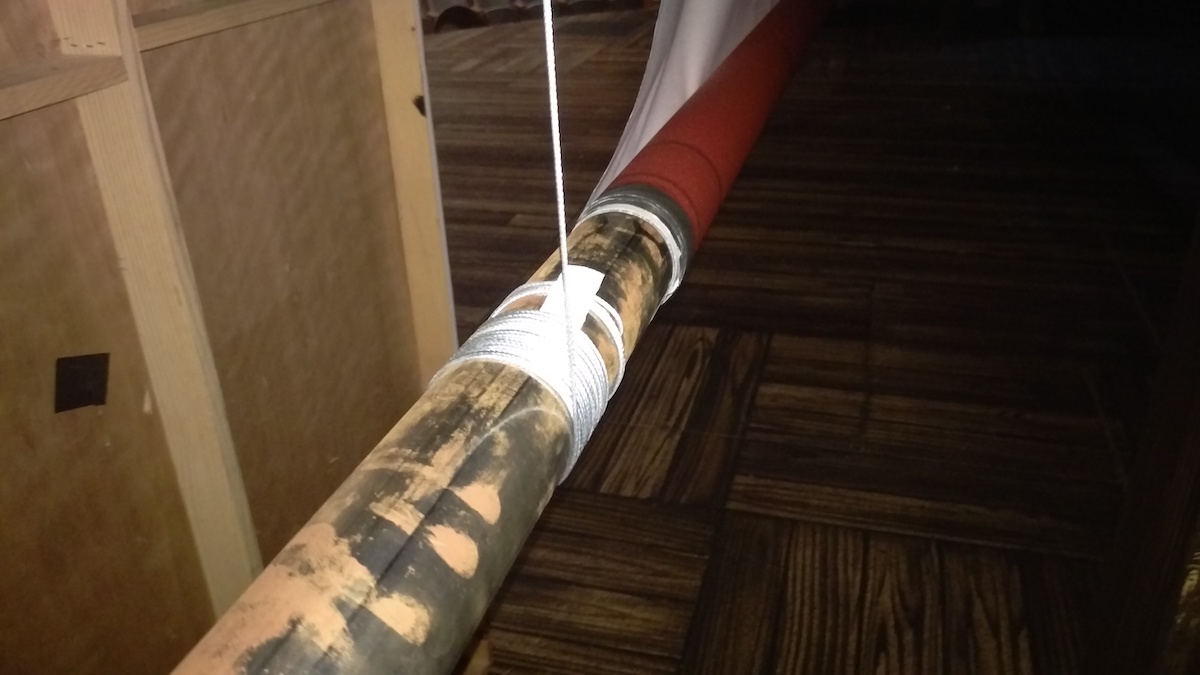
The pulley on the left is a double pulley that would be on one side of the stage. The pulley on the right is part of a block-and-tackle to assist the operator in pulling up the tube. These tubes can end up being heavy, and having a sandbag and/or a block-and-tackle can be of great help.
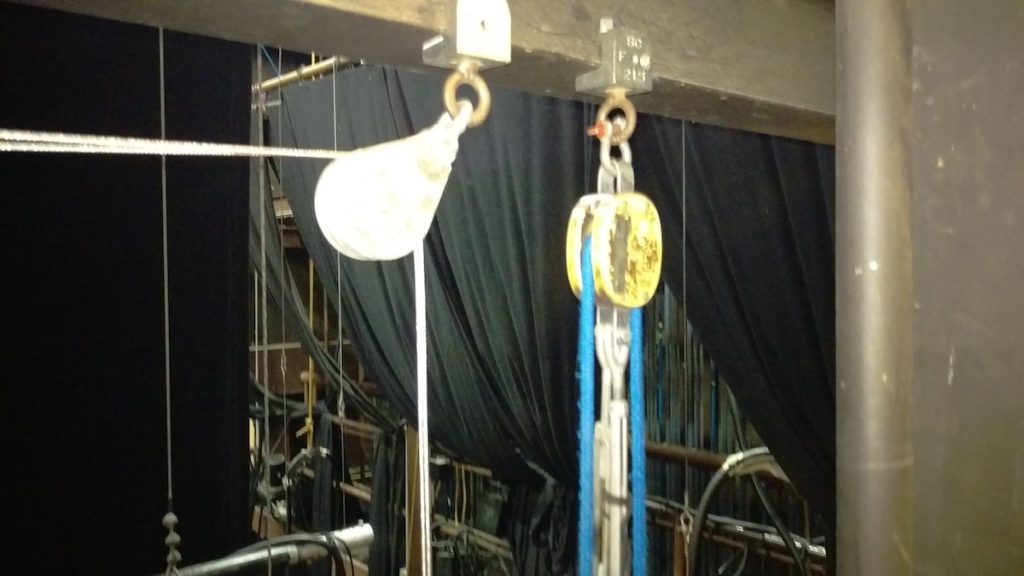
Special mention about weight from TD Michael Katz.
“Olio drops inherently have a 2-1 mechanical advantage. For every foot of rise, you will have 2 feet of rope being pulled. So they are usually slow going up and down. In addition, because they have a mechanical advantage, the weight of the roll is not as important since the operator has a mechanical advantage on their side. Finally (from me at least), the roller does not need to be able to support itself across the width of the drop if you use muslin or canvas or some other relatively low-stretch fabric. The fabric supports the roller and is an essential part of the rigging. An olio rig without the fabric can not work; the rope wraps will just pull off of the tube.”
Press play to see this drop in action. As the rope is let out, the drop rolls down.
Rigging of an Olio Drop can be done in spaces with fairly low ceiling heights. The top just needs to be high enough to be out of view of the audience. There are, of course, times when seeing the rigging above is acceptable. This depends on the overall concept of the design, but that’s another topic.
The illustration to our right shows a traditional Olio Drop with a batton at the top of the drop and a light weight pipe or tube on the bottom. The top is stationary with the drop hanging down from ropes. The tube is pulled up via rope from off stage. When the rope gets pulled it forces the tube to climb the cloth of the drop itself
This Pin from Pinterest shows a rudimentary version of the Olio Drop. Pulling on the rope doesn’t have the same force on the bottom pipe as our other example. Pulling on your “fly” line rope will likely cause the pipe to roll as you pull on the rope, but the pipe isn’t climbing the drop in the same way.
A major issue with this type of rig is the crease that will develop over time where the rope is pressing in on the rolled material.
This video from Chris Noville shows a solution for using a fabric that stretches. A roller tube may have a degree of flex to it, allowing the center to sag when the material being used is stretchable. Scrim is a perfect example. Unlike Muslin, which has very little stretch, a scrim may offer little support across the width of the drop.
PDF on building a roll drop, author unknown. rolldrop.pdf

